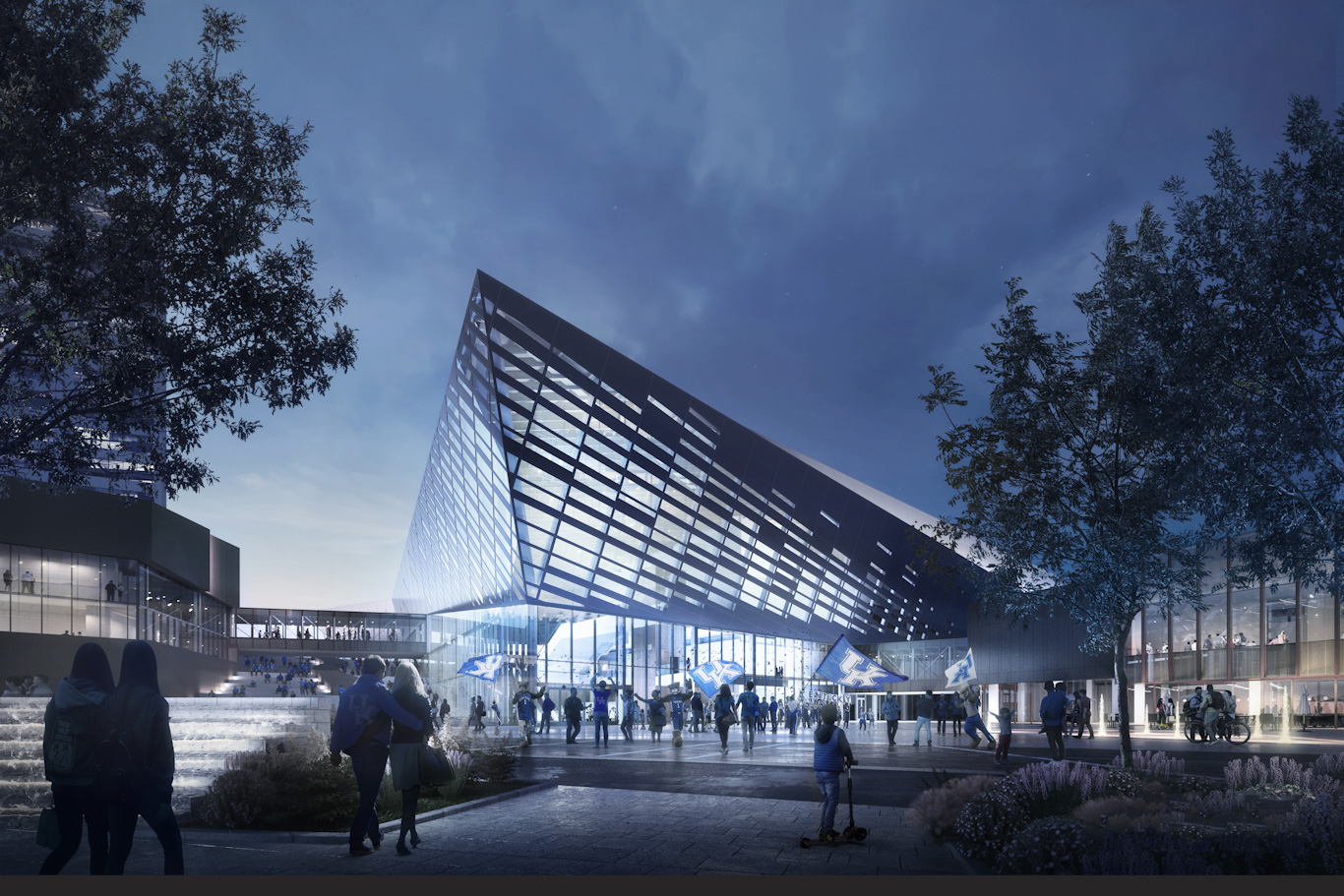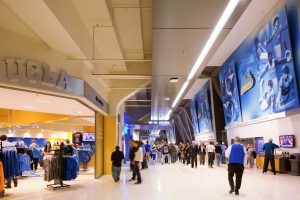 Amazon, Pauley Pavilion, Google, Rupp Arena.
Amazon, Pauley Pavilion, Google, Rupp Arena.
On the surface, these spaces may seem too diverse to have a connection, but there is a common thread. These spaces were designed by an architecture firm that’s disrupting the status quo. NBBJ looks beyond form and function to discover what students, fans, athletes and administrators need in their athletic departments.
“We design workplaces for leading companies around the world. These spaces promote innovation, but also reflect changing generational preferences — with diversity of environments, connection to the community and integration with nature. These drivers, while rooted in office design, are also relevant to the future of sports facilities,” explains Daniel Skiffington, NBBJ’s Director of Communications.
Skiffington goes on to explain that, although the buildings the firm designs for tech companies may seem different from a sports arena, the ideas and lessons are the same. In fact, they are applying these lessons directly to the next generation of stadiums and arenas.
 “Choice is important to employees, but also to sports fans. Today’s worker might want a traditional office environment with a desk, a more casual setting without one, or a mix of both. Likewise, fans want the ability to watch the game from their seat, but also to get up and experience other activities throughout the game.”
“Choice is important to employees, but also to sports fans. Today’s worker might want a traditional office environment with a desk, a more casual setting without one, or a mix of both. Likewise, fans want the ability to watch the game from their seat, but also to get up and experience other activities throughout the game.”
Andrzej Czech, a Sports Practice Lead for NBBJ, says some administrators and coaches are realizing the impact media and tech companies are having on communal spaces in sports complexes.
“I always encourage our clients (in the athletic space) to tour some of the headquarters we’re developing in our workplace studio. They need to see working environments that are changing what we’re doing societally. At the end of the day, Athletic Directors and coaches are CEOs of their teams and departments, and they are interested in what the leaders in design and management are doing in different fields,” he explains. “And a lot of the time, it’s about taking space (new or existing), understanding what the current needs are, and applying generational design to allow for flexibility and functionality.”
A good example is the recent renovation of Pauley Pavilion at UCLA. NBBJ’s team knows sports used to be about sitting in your seat and watching the game, but now fans want a more interactive experience. The Pauley Pavilion was first built in the 1960s and has strong historical significance in the industry. 
“Ascetically we wanted to modernize and give UCLA all of the benefits of a unique fan experience,” Czech says. “But we didn’t want it to lose its iconic look. So, we built an expanded, fully-transparent concourse that brings in natural light and provides endless functional opportunities. We connected the hospitality areas by going underground a bit so we wouldn’t disturb the historic feel of the Pavilion.”
Striking the delicate balance of function, feel and fan experience can be a tall order on a stadium or arena renovation, but NBBJ has a wealth of knowledge to capitalize on. Their approach of blending spaces, using light, updating areas and keeping fan-forward focus has caught the attention of people in the sports business.
“Companies like Google, Amazon, and Disney are laser-focused on trying to attract and retain customers and talent,” says David Millay, Managing Partner of EngageMint.
EngageMint works with organizations like Purdue and Penn State to help them enhance their customer and employee experiences. Similar to NBBJ, EngageMint is helping to bring best practices and insight from innovative companies to the sports industry.

“Changes in customer & employee expectations are impacting athletic departments and Fortune 500 companies alike,” Millay goes on to explain. “NBBJ is creating forward-thinking, sustainable venues by leaning on their knowledge gained from working with the planet’s most disruptive companies.”
Rupp Arena in Kentucky presented an opportunity for NBBJ to show off designing a true mixed-use space for the university and the city of Lexington. It was an older building that had very little natural light. Many fans of Kentucky haven’t seen inside the arena, because it lacked windows and transparency.
“We are going to be taking off the existing exterior of Rupp Arena in a concept that was coined, ‘Free-Rupp,’” explains Czech. “There will be a new concourse and new identity to Rupp Arena so it will have visibility in. If you don’t have a ticket you can still see inside to see the passion of Kentucky basketball. More importantly, the unique physical connections to the surrounding mixed-use, visual connections to the community, and innovative/flexible hospitality spaces are all based on societally trends identified through our other markets and applied at Rupp Arena.”
NBBJ is also redefining campuses that are in the midst of large transitions — like many workplace companies transition through. University of California San Diego has begun the transition to NCAA Division I and will join the Big West Conference on July 1, 2020. Now they have to look the part and be able to accommodate a new and energized fan base — and, very important, the ability to recruit better.
 “The RIMAC was interesting because there will be more eyes on this team than ever before. We redid the seating, which is now all fully retractable, allowing for more flexibility. We also updated the concourses and improved the wifi and technology in the space. The new digital board design is one largest in their conference and creates an instant ‘wow’ factor. It will be a positive introduction to Division I,” says Czech.
“The RIMAC was interesting because there will be more eyes on this team than ever before. We redid the seating, which is now all fully retractable, allowing for more flexibility. We also updated the concourses and improved the wifi and technology in the space. The new digital board design is one largest in their conference and creates an instant ‘wow’ factor. It will be a positive introduction to Division I,” says Czech.
That outside-the-box thinking in the sports world is what universities and athletic departments need at the moment. Even if athletic departments aren’t sure what they are looking for, NBBJ knows how to work in their space, by pulling knowledge from what is happening inside and outside of the athletic world.
“We’re here to lend our expertise to sports,” says Skiffington. “The world is changing; people crave unique communal experiences with each other both in person at a sporting event and online. We seek to find innovative ways to heighten them.”
